Eating disorders affect people of all shapes, sizes, orientations, and walks of life. The reasons these behaviors develop vary, and countless hours of research have been conducted in order to help us understand the factors that lead to them.
I am a licensed independent clinical social worker specializing in the treatment of eating disorders and other behavioral issues that must be addressed to better assist my clients in living happier, healthier lives.
I'm also gay. A "certified gay woman," as I like to joke with some of my colleagues.
Who I am matters to the work I do. Who any of us are, whether we know it or not, comes with us wherever we go. Knowing that can make all the difference in how we understand and treat ourselves and others. In my field, it can positively impact the outcomes my clients see as they go through their recovery programs.
Let's get into why.
A recent survey of 13-24-year-olds who identified as LGBTQ indicated that 54 percent of them had been diagnosed with an eating disorder. Another 21 percent of these LGBTQ youth, suspected that they might have an eating disorder. Getting more granular, among transgender respondents, a staggeringly high 71 percent of these individuals were diagnosed.
Furthermore, it is well documented that gay men have disproportionately higher rates of eating disorders than their straight counterparts. Additionally, individuals who identify as transgender are at risk for developing eating disorders, as they might manipulate their food to gain control of their bodies, accentuate, or lessen certain gendered features. These statistics might be shocking to some, especially those who are not knowingly involved with the private lives of LGBTQ individuals, and perhaps not privy to their anxieties, desires, or concerns beyond what they've seen in the media.
Some LGBTQ individuals struggle with what is referred to as minority stress. This stems from being an LGBTQ individual living in a predominantly heteronormative society --where they may fear being outed, physical or emotional harm, refused service, or otherwise misunderstood.
Therapists must create safe, productive spaces where individuals in treatment have the best opportunity to thrive. But simply describing any kind of treatment center as a safe space and having the best intentions isn't enough.
Clients can admit to a treatment center that identifies itself as a safe space and can expect that their gender identity and sexual orientation will be respected -- but is that true? Will their pronouns be used? Will they go without being judged for their sexual orientation, and allowed to express themselves in a way that is truthful to them? These aren't questions that can be answered simply be declaring a treatment center "safe" and throwing a rainbow flag up on the company website. There is more to making a space safe for LGBTQ individuals than declaring it so.
For a space to be truly safe for the LGBTQ population, it must be more than physically safe and generally respectful (these should be basic factors of any institution, really). These facilities and the experiences they offer must be affirming, intentional, and compassionate -- taking safety and respect to a new level. But where does someone begin to do something like that?
In the treatment center world, I believe that begins with staff members.
Staff members need to be educated on LGBTQ-specific terminology, the coming-out process, the transition process, as well as the many other unique challenges and opportunities that emerge in interactions within the LGBTQ population. What's more, caregivers and other staff need to meaningfully explore their own sexual orientation and gender identity and their effects on their clients, who may or may not identify in dramatically different ways than they do.
For example: if I am a heterosexual therapist working with a gay client, there's good cause for me to understand my sexual orientation and the privileges or biases that might come with it. Doing so will not only allow me to better understand my gaps in knowledge and perception -- it will also make me a better clinician overall once I address the issues my self-examination has brought to light.
But, as I mentioned earlier: I'm not straight. While certainly that is an important factor in the story, it's not what makes me the most effective clinician where working with LGBTQ clients are concerned. This part of my identity might, in some ways, have given me a greater affinity for working with these populations, but certainly my being gay didn't make me especially good at providing affirmative therapeutic strategies, or understanding the challenges trans individuals navigate throughout much of their lives.
That's where the "certified gay woman" part comes back in.
In order to better serve a variety of clients, I realized I needed to be educated to improve my working relationship with LGBTQ clients. I knew that my orientation wouldn't be the linchpin that helped me help them.
Rather, undergoing 36 hours of training to be certified as an LGBTQ affirmative psychotherapy provider -- then taking 52 more hours of training to become a certified transgender care therapist -- was going to help me address gaps in my treatment strategies. Failing to do so could have negatively affected my clients, who I might have presumed too much about, and listened too little.
Undergoing this training has been invaluable to me, particularly in working with trans clients, about whom I knew far too little before. It's also made me realize that there is a broader issue in how we (in the industry) discuss and work with LGBTQ clients with treatment of behavioral disorders.
Some eating disorder treatment centers have an "LGBTQ track." Other eating disorder treatment centers have a "Substance Use Disorders track." Maybe you don't see a problem with this. Allow me to explain.
Routing real, whole people along tracks like these -- essentially implying that identifying as LGBTQ is a co-occurring disorder that needs to be worked on separately -- is problematic and exclusionary. It makes a treatment facility anything but safe, and likely leads to client concerns going overlooked. It's maybe an earnest attempt at being sensitive, but however well-meant it is, its segregationist nature is problematic.
Rather than relying on separate tracks, treatment centers need to broadly educate their staff -- and then create tailored inclusive programming, rather than exclusionary programming.
While there is a profound need for thoughtfulness and knowledge where the unique circumstances of LGBTQ clients are concerned, the point isn't to give them "separate but equal" treatment. The point is to develop facilities, programs, and environments that are inclusive for all genders, all sexualities, and all expressions.
After all: People find themselves with an eating disorder for a variety of reasons. We can't reliably assume that it was a person's LGBTQ identity that led to or even influenced their development of a disorder. We can only do our best in working with them to heal, acknowledging their identity, and express themselves as they choose.
At Alsana, where I work, we try to do that by offering a weekly group entitled, "Gender, Sexuality, and Identity." This group allows all clients to explore issues of gender, intimacy, romantic connection, and identity in general. This is a space where all clients can explore how various aspects of their identity -- and behaviors -- intersect to form their present condition.
There needs to be a space for all clients to explore how their eating disorder has impacted their gender and sexuality, and how their gender and sexuality has impacted their eating disorder. Maybe they are questioning their sexuality and/or gender, and they use their eating disorder to gain some sense of control. Maybe they are rejected by their families, and they use their eating disorder to gain comfort. Maybe as their identity changes, their eating disorder behavior changes. In any case, the least I can do is give myself the tools to help them explore that -- so I can fulfill my commitment to help them live happier, healthier lives.
Allison Burnett, LICSW, CEDS, is "a certified gay woman" and a licensed independent clinical social worker specializing in the treatment of eating disorders at Alsana, a recovery community with locations nationwide.
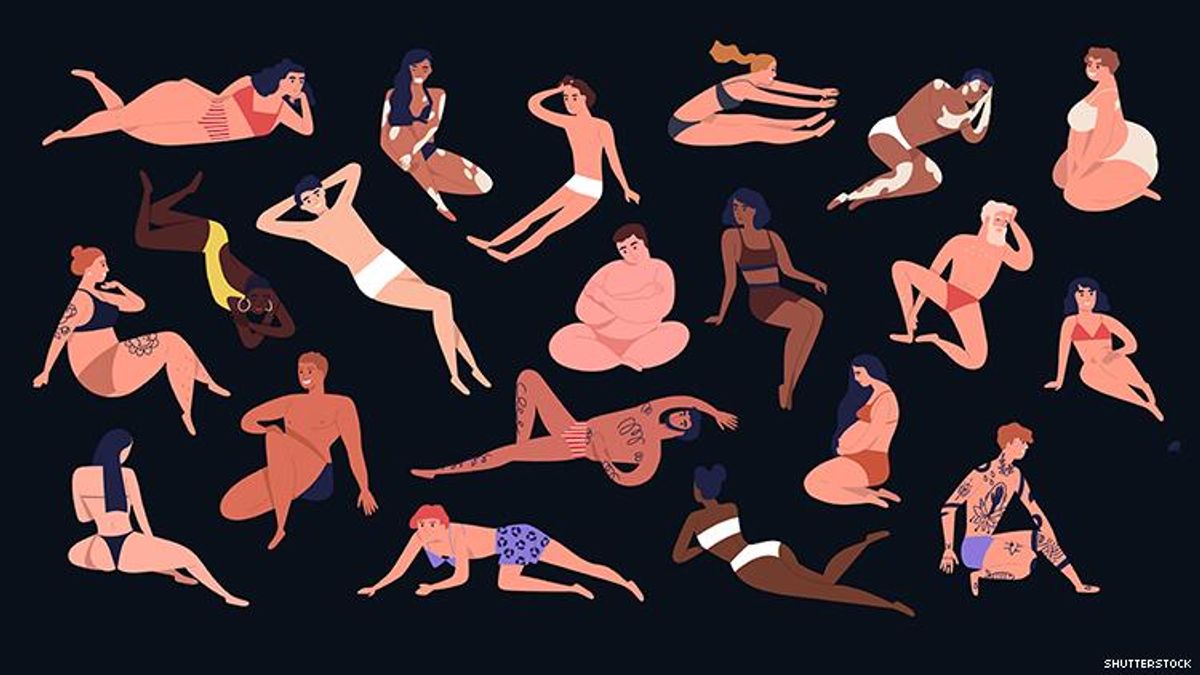


























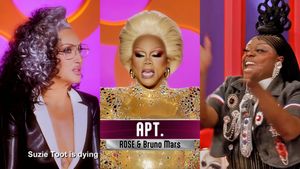



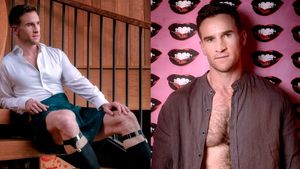


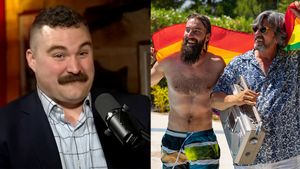
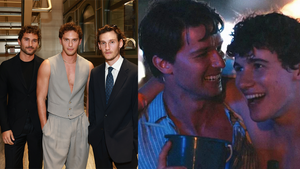





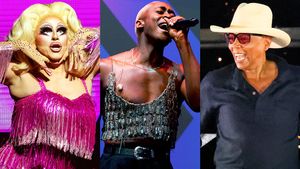




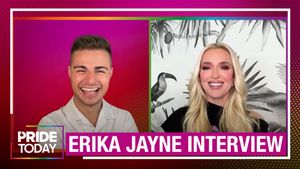



































Fans thirsting over Chris Colfer's sexy new muscles for Coachella